Intro
A toddler's heart rate is a vital sign that can provide valuable insights into their overall health and wellbeing. As a parent or caregiver, it's essential to understand what a normal heart rate is for a toddler and how to monitor it. A normal heart rate for a toddler can vary depending on their age, size, and activity level. Generally, a toddler's heart rate can range from 80 to 120 beats per minute (bpm) when they are at rest. However, this rate can increase significantly when they are active, excited, or experiencing stress. Monitoring a toddler's heart rate can help identify potential health issues, such as anemia, dehydration, or cardiac problems.
It's also important to note that a toddler's heart rate can be influenced by various factors, including their environment, emotions, and physical activity. For example, a toddler who is playing outside on a hot day may have a faster heart rate due to dehydration and heat exhaustion. On the other hand, a toddler who is sleeping or relaxing may have a slower heart rate. As a parent or caregiver, it's crucial to be aware of these factors and to monitor a toddler's heart rate regularly to ensure their overall health and wellbeing.
Understanding a toddler's heart rate can also help parents and caregivers to identify potential health issues early on. For instance, if a toddler's heart rate is consistently higher or lower than normal, it could be a sign of an underlying health problem. Similarly, if a toddler's heart rate is irregular or exhibits other abnormal patterns, it may indicate a cardiac issue that requires medical attention. By monitoring a toddler's heart rate and seeking medical attention if necessary, parents and caregivers can help ensure their child receives the best possible care and attention.
Toddler Heart Rate Monitoring
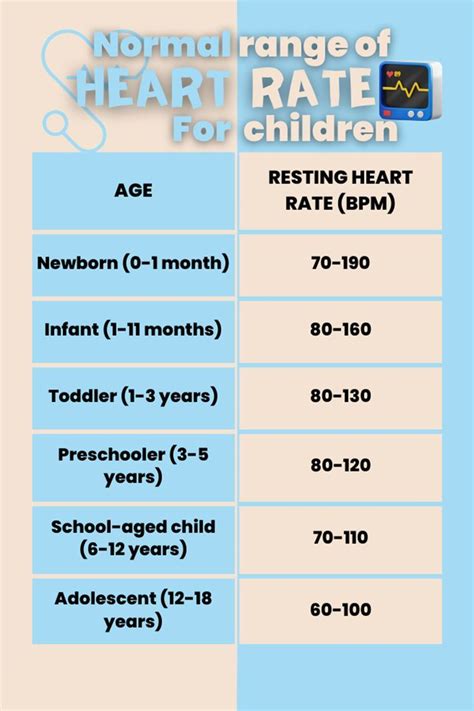
Monitoring a toddler's heart rate can be done using various methods, including pulse checks, electrocardiograms (ECGs), and heart rate monitors. Pulse checks involve feeling the pulse at the wrist or neck to determine the heart rate. ECGs, on the other hand, use electrodes to measure the electrical activity of the heart. Heart rate monitors, which can be worn on the wrist or chest, use sensors to track the heart rate in real-time. These methods can provide valuable insights into a toddler's heart rate and help identify potential health issues.
Methods of Monitoring
There are several methods of monitoring a toddler's heart rate, each with its own advantages and disadvantages. Pulse checks, for example, are a simple and non-invasive method that can be done at home. However, they may not provide accurate readings, especially if the toddler is moving or fussy. ECGs, on the other hand, are more accurate but may require a visit to the doctor's office or hospital. Heart rate monitors are a convenient option but may not be suitable for young toddlers who may not be able to wear them comfortably.Normal Toddler Heart Rate
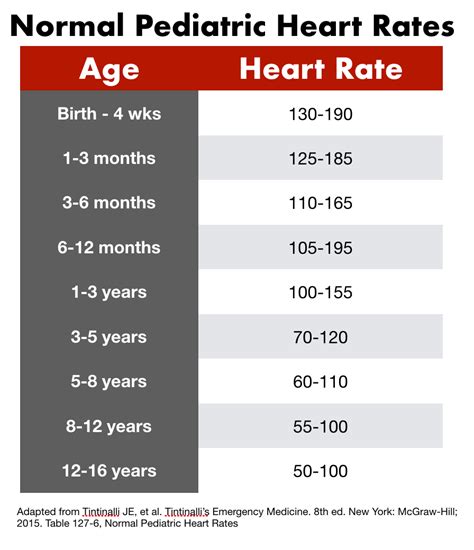
A normal toddler heart rate can vary depending on their age, size, and activity level. Generally, a toddler's heart rate can range from 80 to 120 bpm when they are at rest. However, this rate can increase significantly when they are active, excited, or experiencing stress. For example, a toddler who is playing outside may have a heart rate of 140-160 bpm, while a toddler who is sleeping may have a heart rate of 60-80 bpm.
Factors Affecting Heart Rate
There are several factors that can affect a toddler's heart rate, including their environment, emotions, and physical activity. For example, a toddler who is playing outside on a hot day may have a faster heart rate due to dehydration and heat exhaustion. On the other hand, a toddler who is sleeping or relaxing may have a slower heart rate. Other factors that can affect a toddler's heart rate include their diet, hydration levels, and overall health.Toddler Heart Rate and Health
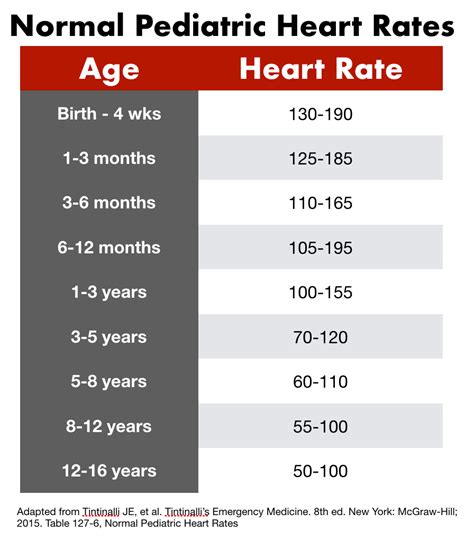
A toddler's heart rate can provide valuable insights into their overall health and wellbeing. For example, a consistently high or low heart rate may indicate an underlying health issue, such as anemia, dehydration, or cardiac problems. Similarly, an irregular or abnormal heart rate pattern may indicate a cardiac issue that requires medical attention. By monitoring a toddler's heart rate and seeking medical attention if necessary, parents and caregivers can help ensure their child receives the best possible care and attention.
Common Health Issues
There are several common health issues that can affect a toddler's heart rate, including anemia, dehydration, and cardiac problems. Anemia, for example, is a condition characterized by low red blood cell count, which can cause a faster heart rate. Dehydration, on the other hand, can cause a slower heart rate, as well as other symptoms such as dry mouth and dark urine. Cardiac problems, such as congenital heart defects, can also affect a toddler's heart rate and require medical attention.Monitoring Toddler Heart Rate at Home
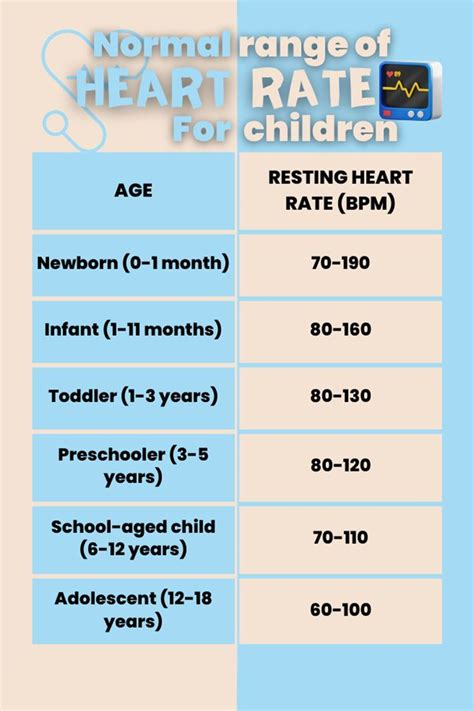
Monitoring a toddler's heart rate at home can be done using various methods, including pulse checks and heart rate monitors. Pulse checks involve feeling the pulse at the wrist or neck to determine the heart rate. Heart rate monitors, which can be worn on the wrist or chest, use sensors to track the heart rate in real-time. These methods can provide valuable insights into a toddler's heart rate and help identify potential health issues.
Tips for Monitoring at Home
There are several tips for monitoring a toddler's heart rate at home, including using a pulse oximeter, which can measure oxygen saturation levels in addition to heart rate. It's also essential to choose a heart rate monitor that is suitable for toddlers, with a comfortable and adjustable strap. Additionally, parents and caregivers should be aware of the normal heart rate range for toddlers and seek medical attention if they notice any abnormalities.Toddler Heart Rate and Exercise
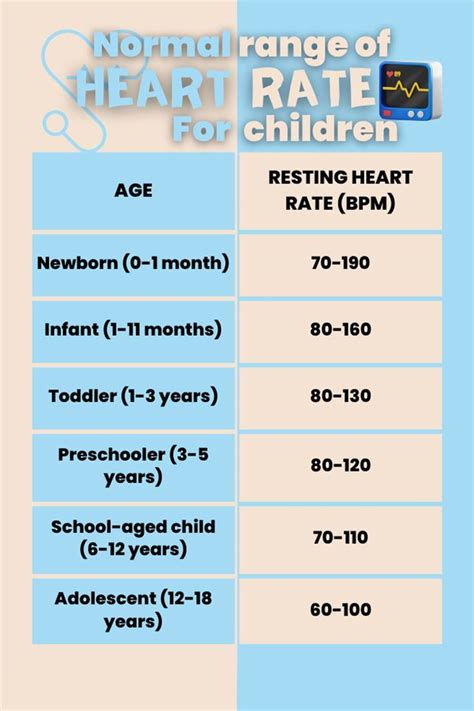
Exercise can have a significant impact on a toddler's heart rate, causing it to increase significantly. This is because exercise requires more oxygen and energy, which can cause the heart to beat faster. However, it's essential to ensure that toddlers engage in regular physical activity to promote overall health and wellbeing. Parents and caregivers can encourage toddlers to engage in physical activity, such as playing outside, dancing, or swimming, while monitoring their heart rate to ensure it remains within a normal range.
Benefits of Exercise
There are several benefits of exercise for toddlers, including improved cardiovascular health, increased strength and flexibility, and enhanced cognitive development. Exercise can also help toddlers develop social skills, such as sharing and taking turns, and can provide opportunities for bonding with parents and caregivers. Additionally, regular physical activity can help toddlers develop healthy habits and a positive body image, which can last a lifetime.Conclusion and Next Steps

In conclusion, a toddler's heart rate is a vital sign that can provide valuable insights into their overall health and wellbeing. By monitoring a toddler's heart rate and seeking medical attention if necessary, parents and caregivers can help ensure their child receives the best possible care and attention. It's essential to be aware of the normal heart rate range for toddlers and to monitor their heart rate regularly, especially during physical activity or when they are experiencing stress or emotions.
We invite you to share your thoughts and experiences on toddler heart rate monitoring in the comments section below. If you have any questions or concerns, please don't hesitate to reach out. Additionally, if you found this article informative and helpful, please share it with your friends and family to help spread awareness about the importance of toddler heart rate monitoring.
What is a normal heart rate for a toddler?
+A normal heart rate for a toddler can range from 80 to 120 beats per minute (bpm) when they are at rest. However, this rate can increase significantly when they are active, excited, or experiencing stress.
How can I monitor my toddler's heart rate at home?
+You can monitor your toddler's heart rate at home using a pulse oximeter or a heart rate monitor. It's essential to choose a device that is suitable for toddlers and to follow the manufacturer's instructions for use.
What are the benefits of exercise for toddlers?
+Exercise can have several benefits for toddlers, including improved cardiovascular health, increased strength and flexibility, and enhanced cognitive development. Regular physical activity can also help toddlers develop social skills and a positive body image.
